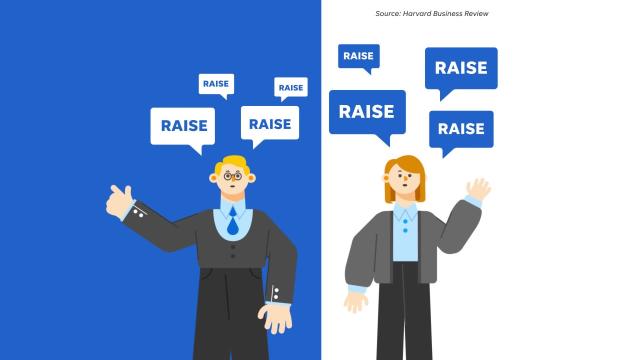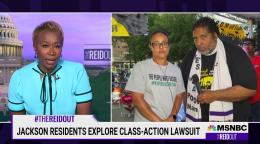Tucker Carlson Suggests GOP Should Be Like Italy’s Fascist PM, Who He (Incorrectly) Says Isn’t Fascist
Ross A. Lincoln
Mon, September 26, 2022
On Monday’s episode of his Fox News Show, Tucker Carlson appeared to be a huge fan of newly-elected Italian Prime Minister Giorgia Meloni, a neo-fascist who was elected as part of a group called the ‘centre-right coalition’ on Sunday night.
In a twisty commentary on Monday, Carlson asserted that Meloni isn’t actually a fascist because she is religious, and then said that Republican leaders in congress basically suck compared to Meloni and the movement she leads.
First, in a clip you can see above, Carlson contrasted the public policy pitches Republicans are making ahead of the 2022 election to Meloni’s. Tucker isn’t a fan of the Republican pitch.
“House Republicans just spelled out what they’re running on, it’s a document called the ‘Commitment to America’. It’s fine. Probably not much in it you disagree with it (sic). Have you heard of it? No, you probably haven’t. You probably haven’t read it. Nobody really cares. Why? Because there is nothing real in it.”
Carlson complained that the GOP document doesn’t mention “the attacks on the American family that you see every day,” listing for example concerns like dwindling prosperity and lower upward mobility. “People are upset about that, why wouldn’t they be? But nobody says it.”
Then a couple of minutes later Carlson attempted to refute the highly accurate description of Meloni as a fascist, saying “fascists don’t believe in God. God is a rival to their power. Of course. [Meloni] is a person publicly professing faith in God.”
OK so the reason we know that Meloni is a fascist is that she is a member of the “Brothers of Italy,” a party formed by breakaways from the country’s center-right The People of Freedom party. Those breakaways, including Meloni herself, were largely drawn from membership of the National Alliance, a neo-fascist party that literally uses the symbol of the defunct neo-fascist party Italian Social Movement, which itself was founded by members of fascist parties that were banned after World War II.
But if that wasn’t enough, Meloni has, quite literally, expressed admiration for Mussolini (the guy who founded fascism) and for Giorgio Almirante, an Italian Nazi collaborator who founded Italian Social Movement. Read more here.
So, to sum up: She’s a member of a neo-fascist party descended from the original fascist parties, and has expressed admiration for Mussolini and one of Italy’s most prominent Nazis.
As for Carlson’s suggestion that belief in God means someone can’t be a Fascist, it is true that in his youth, when he still professed left-wing beliefs, Mussolini was an atheist. After his rise to power, he embraced the Catholic Church, became a huge supporter of it, and was widely supported by an organization of priests. He also had his children baptized Catholic, and even deployed violence to quell opposition to the agreement that created Vatican City as an independent country. Read more about it here
How a party of neo-fascist roots won big in Italy


1 / 13
Right-wing party Brothers of Italy's leader Giorgia Meloni, center-right on stage, addresses a rally as she starts her political campaign ahead of Sept. 25 general elections, in Ancona, Italy, Tuesday, Aug. 23, 2022. The Brothers of Italy party has won the most votes in Italy’s national election. The party has its roots in the post-World War II neo-fascist Italian Social Movement. Giorgia Meloni has taken Brothers of Italy from a fringe far-right group to Italy’s biggest party. (AP Photo/Domenico Stinellis, File)
Mon, September 26, 2022
ROME (AP) — The Brothers of Italy party, which won the most votes in Italy’s national election, has its roots in the post-World War II neo-fascist Italian Social Movement.
Keeping the movement's most potent symbol, the tricolor flame, Giorgia Meloni has taken Brothers of Italy from a fringe far-right group to Italy's biggest party.
A century after Benito Mussolini’s 1922 March on Rome, which brought the fascist dictator to power, Meloni is poised to lead Italy's first far-right-led government since World War II and Italy's first woman premier.
HOW DID POST-FASCISM BEGIN IN ITALY?
The Italian Social Movement, or MSI, was founded in 1946 by Giorgio Almirante, a chief of staff in Mussolini’s last government. It drew fascist sympathizers and officials into its ranks following Italy’s role in the war, when it was allied with the Nazis and then liberated by the Allies.
Throughout the 1950-1980s, the MSI remained a small right-wing party, polling in the single digits. But historian Paul Ginsborg has noted that its mere survival in the decades after the war “served as a constant reminder of the potent appeal that authoritarianism and nationalism could still exercise among the southern students, urban poor and lower middle classes.”
The 1990s brought about a change under Gianfranco Fini, Almirante’s protege who nevertheless projected a new moderate face of the Italian right. When Fini ran for Rome mayor in 1993, he won a surprising 46.9% of the vote — not enough to win but enough to establish him as a player. Within a year, Fini had renamed the MSI the National Alliance.
It was in those years that a young Meloni, who was raised by a single mother in a Rome working-class neighborhood, first joined the MSI’s youth branch and then went onto lead the youth branch of Fini’s National Alliance.
DOES THAT MEAN MELONI IS NEO-FASCIST?
Fini was dogged by the movement’s neo-fascist roots and his own assessment that Mussolini was the 20th century’s “greatest statesman.” He disavowed that statement, and in 2003 visited the Yad Vashem Holocaust memorial in Israel. There, he described Italy’s racial laws, which restricted Jews’ rights, as part of the “absolute evil” of the war.
Meloni, too, had praised Mussolini in her youth but visited Yad Vashem in 2009 when she was a minister in Silvio Berlusconi's last government. Writing in her 2021 memoir “I Am Giorgia,” she described the experience as evidence of how “a genocide happens step by step, a little at a time.”
During the campaign, Meloni was forced to confront the issue head-on, after the Democrats warned that she represented a danger to democracy.
“The Italian right has handed fascism over to history for decades now, unambiguously condemning the suppression of democracy and the ignominious anti-Jewish laws,” she said in a campaign video.
HOW DID BROTHERS OF ITALY EMERGE?
Meloni, who proudly touts her roots as an MSI militant, has said the first spark of creating Brothers of Italy came after Berlusconi resigned as premier in 2011, forced out by a financial crisis over Italy’s soaring debt and his own legal problems.
Meloni refused to support Mario Monti, who was tapped by Italy's president to try to form a technocratic government to reassure international financial markets. Meloni couldn't stand what she believed was external pressure from European capitals to dictate internal Italian politics.
Meloni co-founded the party in 2012, naming it after the first words of the Italian national anthem. “A new party for an old tradition,” Meloni wrote.
Brothers of Italy would only take in single-digit results in its first decade. The European Parliament election in 2019 brought Brothers of Italy 6.4% — a figure that Meloni says “changed everything.”
As the leader of the only party in opposition during Mario Draghi's 2021-2022 national unity government, her popularity soared, with Sunday's election netting it 26%.
BUT WHAT ABOUT THE PARTY'S LOGO?
The party has at the center of its logo the red, white and green flame of the original MSI that remained when the movement became the National Alliance. While less obvious than the bundle of sticks, or fasces, that was the prominent symbol of Mussolini’s National Fascist Party, the tricolor flame is nevertheless a powerful image that ties the current party to its past.
“Political logos are a form of branding, no different than those aimed at consumers,” said Rutgers University professor T. Corey Brennan, who recently wrote "Fasces: A History of Rome’s Most Dangerous Political Symbol.”
He recalled that when Almirante made his final MSI campaign pitch to voters in the 1948 election at Rome’s Spanish Steps, he put the party’s flame symbol on top of the obelisk and illuminated it with floodlights.
“You can make whatever you want out of a flame, but everybody understood that Almirante was making a deeply emotional appeal to keep the spirit of fascism alive,” he said.
HOW DO ITALIANS FEEL ABOUT IT?
In general, the party's neo-fascist roots appear to be of more concern abroad than at home. Some historians explain that by noting a certain historical amnesia here and Italians’ general comfort living with the relics of fascism as evidence that Italy never really repudiated the Fascist Party and Mussolini in the same way Germany repudiated National Socialism and Hitler.
While Germany went through a long and painful process reckoning with its past, Italians have in many ways simply turned a willful blindness to their own.
Historian David Kertzer of Brown University notes that there are 67 institutes for the study of the Resistance to Fascism in Italy, and virtually no center for the study of Italian Fascism.
In addition, Mussolini-era architecture and monuments are everywhere: from the EUR neighborhood in southern Rome to the Olympic training center on the Tiber River, with its obelisk still bearing Mussolini’s name.
The Italian Constitution bars the reconstitution of the Fascist party, but far-right groups still display the fascist salute and there continues to be an acceptance of fascist symbols, said Brennan.
“You don’t have to look very hard for signs,” Brennan said in a phone interview. “Fully a quarter of all manhole covers in Rome still have the fasces on them.”
DOES THAT MEAN ITALIANS SUPPORT FASCISM?
If history is any guide, one constant in recent political elections is that Italians vote for change, with a desire for something new seemingly overtaking traditional political ideology in big pendulum shifts, said Nathalie Tocci, director of the Rome-based Institute of International Affairs.
Tocci said the Brothers of Italy's popularity in 2022 was evidence of this “violent” swing that is more about Italian dissatisfaction than any surge in neo-fascist or far-right sentiment.
“I would say the main reason why a big chunk of that — let’s say 25-30% — will vote for this party is simply because it’s the new kid on the block," she said.
Meloni still speaks reverently about the MSI and Almirante, even if her rhetoric can change to suit her audience.
This summer, speaking in perfect Spanish, she thundered at a rally of Spain's hard-right Vox party: “Yes to the natural family. No to the LGBT lobby. Yes to sexual identity. No to gender ideology."
Back home on the campaign trail, she projected a much more moderate tone and appealed for unity in her victory speech Monday.
“Italy chose us,” she said. “We will not betray it, as we never have.”
___
Sabrina Sergi contributed to this report.












